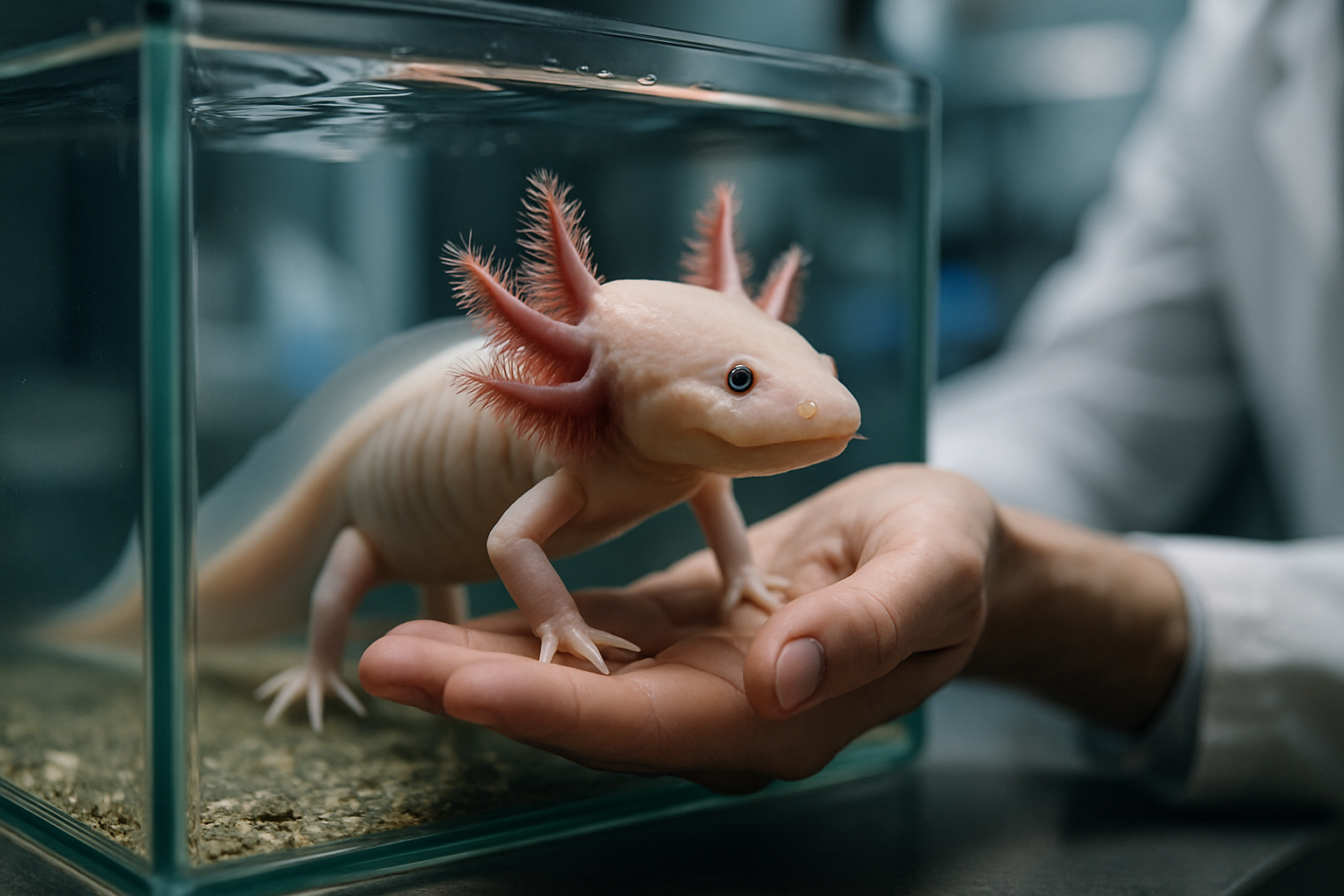The Remarkable World of Axolotl Regeneration
The axolotl, a fascinating salamander species native to Mexico, has captivated scientists and animal enthusiasts alike with its extraordinary regenerative abilities. These aquatic amphibians can regrow lost limbs, organs, and even parts of their brain, making them a subject of intense research and wonder in the scientific community.

The Axolotl’s Unique Biology
Axolotls (Ambystoma mexicanum) are neotenic salamanders, meaning they retain juvenile features throughout their lives. Unlike most amphibians, axolotls typically do not undergo metamorphosis to become terrestrial adults. Instead, they remain aquatic, sporting their distinctive external gills and finned tail well into adulthood.
This unique biological characteristic is closely tied to their regenerative abilities. The retention of juvenile traits allows axolotls to maintain a higher degree of cellular plasticity, which is crucial for their exceptional regenerative capabilities.
The Mechanics of Regeneration
When an axolotl loses a limb, the healing process begins almost immediately. Within hours, a mass of cells called a blastema forms at the site of injury. This blastema contains dedifferentiated cells – mature cells that have reverted to a stem cell-like state.
These dedifferentiated cells then begin to multiply and specialize, forming new tissues, bones, and even nerves. Remarkably, the regenerated limb is an exact replica of the original, complete with all the necessary structures and functions.
Beyond Limb Regeneration
While the regrowth of limbs is impressive enough, axolotls can regenerate far more than just appendages. They can repair damaged organs, including portions of the brain and heart. Even more astoundingly, they can regenerate their spinal cord without any loss of function – a feat that remains impossible for humans and most other vertebrates.
This ability to regenerate complex structures and organs makes axolotls invaluable models for studying tissue repair and regeneration in vertebrates.
Implications for Human Medicine
The axolotl’s regenerative abilities have significant implications for human medicine. Researchers are studying these amphibians in hopes of unlocking the secrets of tissue regeneration and applying them to human health.
Potential applications include improved wound healing, organ repair, and even the possibility of regrowing lost limbs in humans. While such advancements are still far from reality, the axolotl’s regenerative processes provide valuable insights into the cellular mechanisms underlying tissue repair and regeneration.
Conservation Concerns
Despite their importance in scientific research and their popularity in the pet trade, wild axolotls face significant threats. Their natural habitat in the canals of Xochimilco, Mexico, has been severely degraded due to urbanization, pollution, and the introduction of invasive species.
As a result, wild axolotl populations have plummeted, with some estimates suggesting fewer than 1,000 individuals remain in their natural habitat. This decline has led to the axolotl being classified as critically endangered by the International Union for Conservation of Nature (IUCN).
Axolotls in Captivity
While wild populations struggle, axolotls have found success in captivity. Their unique appearance and relatively easy care requirements have made them popular pets among amphibian enthusiasts. In the pet trade, axolotls typically range in price from $20 to $70, depending on their color morph and age.
However, potential owners should be aware that axolotls require specific care conditions, including cool water temperatures and a carefully managed diet. Their increasing popularity as pets has raised concerns about the ethics of keeping these endangered animals in captivity and the potential impact on wild populations.
Current Research and Future Prospects
Scientists continue to unravel the mysteries of axolotl regeneration. Recent advancements in genetic sequencing have provided new insights into the genes and molecular pathways involved in the regeneration process.
One particularly exciting area of research involves the study of axolotl limb regeneration at the single-cell level. By analyzing the behavior and gene expression of individual cells during the regeneration process, researchers hope to gain a more detailed understanding of how complex structures are rebuilt from scratch.
As our knowledge of axolotl biology grows, so too does the potential for translating these insights into practical applications in human medicine. While we may still be far from regrowing human limbs, the humble axolotl continues to inspire and inform cutting-edge research in regenerative medicine.
In conclusion, the axolotl’s remarkable regenerative abilities make it a true marvel of the animal kingdom. As we continue to study these fascinating creatures, we not only gain valuable insights into the possibilities of tissue regeneration but also face important questions about conservation and the ethics of keeping endangered species as pets. The story of the axolotl serves as a powerful reminder of the wonders that exist in nature and the potential they hold for advancing human knowledge and medicine.





